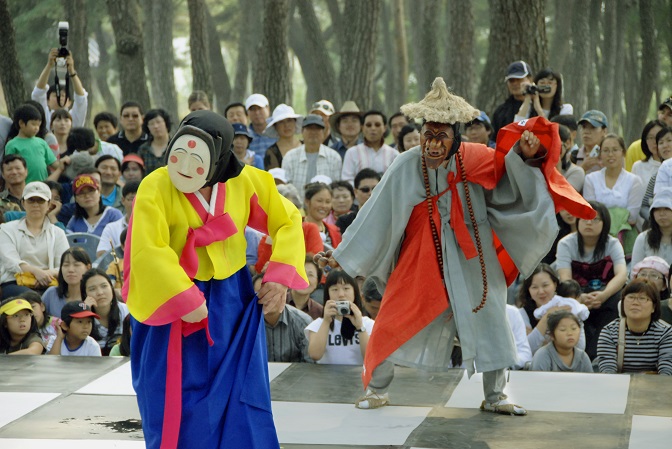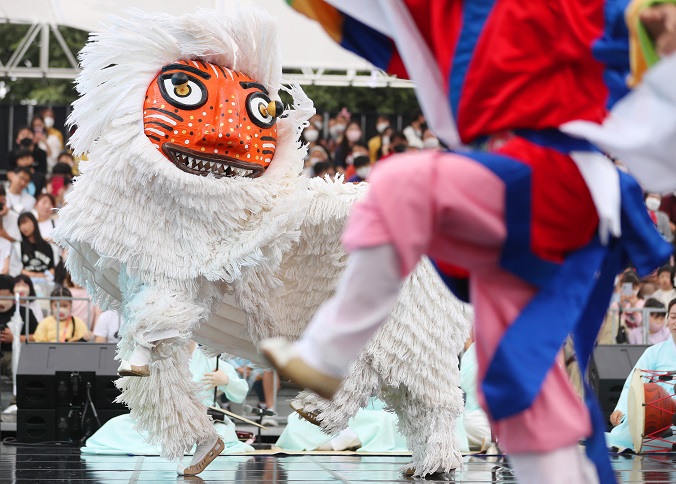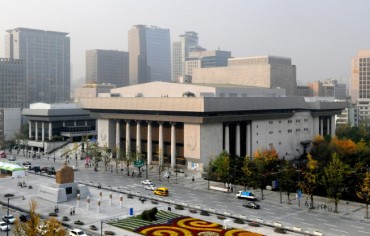
This undated photo provided by the Cultural Heritage Administration shows dancers performing a traditional Korean mask dance.
SEOUL, Nov. 1 (Korea Bizwire) — The traditional Korean mask dance, or “talchum” in Korean, is almost certain to be added to UNESCO’s Intangible Cultural Heritage list.
According to the homepage of UNESCO on Tuesday, “Talchum, Mask Dance Drama in the Republic of Korea” was recommended for inscription on the list by a subpanel of its Intergovernmental Committee for the Safeguarding of the Intangible Cultural Heritage.
“Inscribe” is the highest in a three-tier system — “inscribe,” “refer” and “not to inscribe” — used by the preliminary evaluation body to report the results of its review to the intergovernmental committee.
Recommendations for inscription have rarely been reversed.
The final decision will be made during the 17th committee meeting scheduled to be held from Nov. 28 to Dec. 3 in Morocco.
South Korea has 21 entries on UNESCO’s Intangible Cultural Heritage lists — the Representative List of the Intangible Cultural Heritage of Humanity and the List of Intangible Cultural Heritage in Need of Urgent Safeguarding.
They include “ssireum,” or traditional Korean wrestling, which was inscribed in 2018 following joint efforts by South and North Korea.
Most recently, the Lantern Lighting Festival, or “Yeondeunghoe” in Korean, was listed by UNESCO as an Intangible Cultural Heritage of Humanity in 2020. The festival is held every spring to celebrate Buddha’s Birthday.

This undated file photo shows dancers performing a traditional Korean mask dance during a local festival. (Yonhap)
Talchum combines dance with an accompanying narrative and has the characteristics of both performing arts and drama.
Like other traditional Korean communal performances, talchum relies on humor and satire to depict social problems.
The genre involves two-way interaction, relying on the audience’s response, such as jeering and cheering, for the show to progress.
The Cultural Heritage Administration considered talchum’s influence on Korea’s modern arts in its application for inscription on the UNESCO list.
According to the agency, the repeated recreation of talchum in Korean history helped bolster the identity and continuity of the Korean community.
Talchum has many different variations depending on regions. Currently, 13 regional versions, including those from Tongyeong, Yangju and the North Korean county of Pukchong, are classified as National Intangible Cultural Heritage.
Also among the 31 entries recommended for inscription Tuesday was the Pyongyang Raengmyeon custom submitted by the North.
Literally translated into cold noodles, “raengmyeon,” or “naengmyeon” in South Korea, is a cold noodle dish of North Korean origin, which has thin, chewy noodles that are made with buckwheat and potato or sweet potato starch.
The Pyongyang-style dish is known for its chilled beef broth that has a bland, savory flavor.
(Yonhap)






